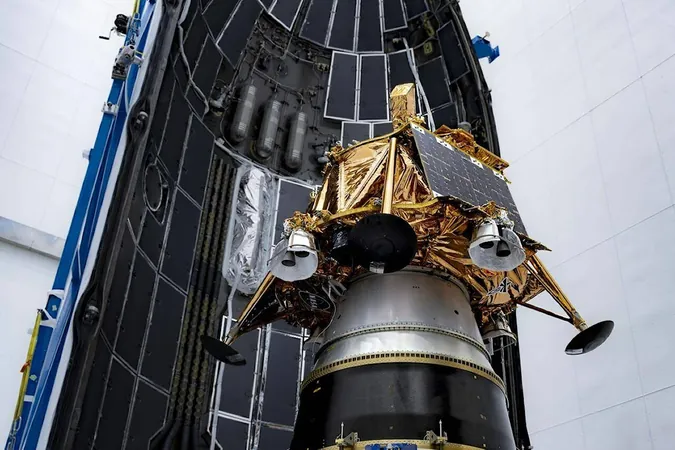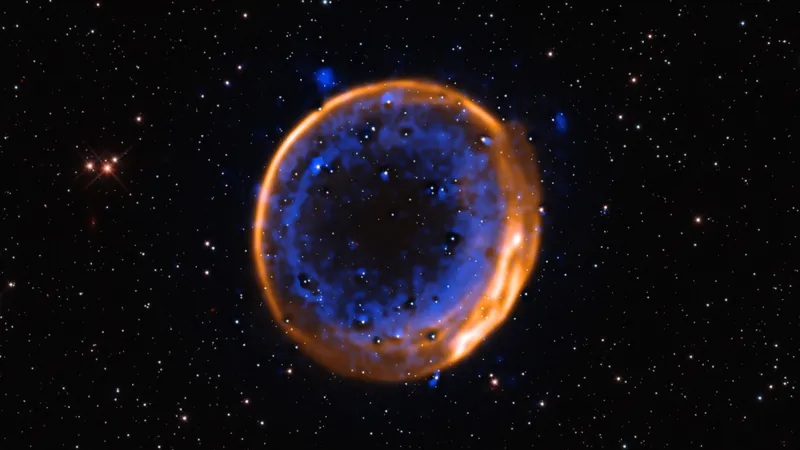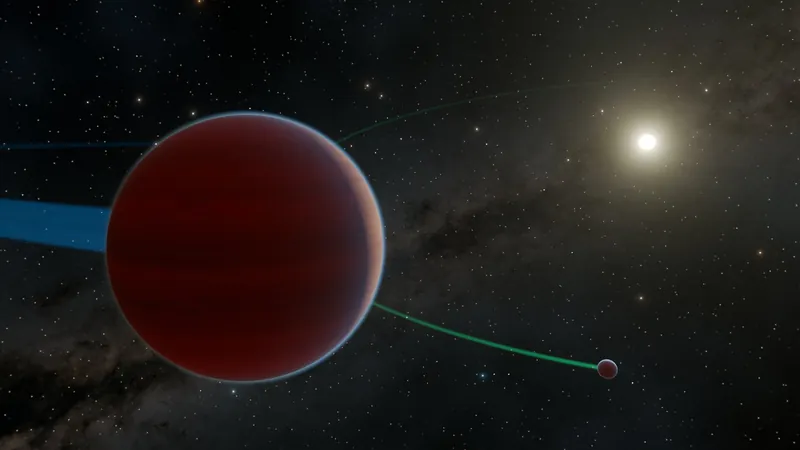
Dual Lunar Landers Launch into the Cosmos: Paving the Way for Future Moon Missions!
2025-01-15
Author: Benjamin
Groundbreaking Mission
In a groundbreaking double-header mission, SpaceX successfully launched two private lunar landers on Wednesday, representing a significant leap for both U.S. and Japanese ventures looking to capitalize on lunar exploration. The launch, which took place under the starry night sky from NASA’s Kennedy Space Center, is a part of a growing movement of private spacecraft aiming to establish a foothold on the moon.
Independent Paths
These two distinct landers, although launched together to optimize costs, are charting independent paths. Just one hour into their journey, they separated as planned, embarking on their individual, roundabout courses for what will be a months-long trek to the moon.
Ispace's Second Attempt
The mission marks a second attempt for Tokyo-based ispace, as their initial lander tragically crashed during its landing attempt two years ago. This time, ispace’s lander is equipped with a rover designed to scoop lunar soil for scientific analysis, as well as tests to identify potential food and water sources that could support future exploration.
Firefly Aerospace's Innovations
Meanwhile, Texas-based Firefly Aerospace is bringing 10 innovative experiments on board for NASA. These include a vacuum system designed to collect lunar dirt, a drill intended to assess subsurface temperatures, and a pioneering device that will help future astronauts keep their suits and gear free of the moon’s abrasive dust.
Landing Plans
Firefly’s lander, cheekily named Blue Ghost after a local firefly species, is expected to be the first to touch down on the moon, aiming for a March landing in Mare Crisium, a significant volcanic plain in the northern hemisphere. In contrast, ispace’s slightly larger lander, dubbed Resilience, is projected to arrive later, with a landing planned for late May or early June at Mare Frigoris, further north on the moon’s visible face.
No Race, Just Objectives
“We don’t view this as a race,” remarked Jumpei Nozaki, ispace's CFO, during a briefing from Cape Canaveral. “The speed isn't what’s important; it’s about achieving our objectives.” Both industry leaders recognize the daunting challenges they face, especially with the debris scattered across the lunar surface left by previous missions. Since the 1960s, only five nations—namely the U.S., Soviet Union, China, India, and Japan—have successfully landed spacecraft on the moon.
Confident but Cautious
Firefly’s CEO Jason Kim expressed confidence in their engineering and design, but he humorously donned an Irish shamrock for luck, showcasing the unpredictability of lunar landings. America remains the only nation to have sent astronauts to the moon, with NASA’s Artemis program targeting a crewed return by the decade's end. “We’re sending numerous scientific and technological advancements in advance to ensure that future manned missions are successful,” stated Nicky Fox, NASA’s science mission chief, shortly before launch.
Mission Duration and Goals
If both lunar landers successfully accomplish their respective touchdowns, they will operate for two weeks in constant daylight, only shutting down to conserve energy during the lunar night. Once settled on the moon's surface, ispace’s 11-pound rover will venture in small circles nearby, traveling at a crawl of less than an inch per second. Additionally, the rover will have a playful mission to deliver a toy-sized red house created by a Swedish artist to the lunar surface.
Mission Costs
For NASA, the cost of Firefly’s mission stands at $101 million, with an extra $44 million allocated for scientific experiments. While ispace's mission cost remains undisclosed, it will reportedly be lower than the previous attempt which exceeded $100 million.
Looking Ahead
Looking ahead, the excitement doesn’t stop here. By the end of February, Houston-based Intuitive Machines is scheduled for its second lunar launch after successfully achieving the first U.S. lunar touchdown in over 50 years last year, setting the stage for an exhilarating new era of moon exploration. Stay tuned as humanity embarks on this next giant leap into the cosmos!









 Brasil (PT)
Brasil (PT)
 Canada (EN)
Canada (EN)
 Chile (ES)
Chile (ES)
 Česko (CS)
Česko (CS)
 대한민국 (KO)
대한민국 (KO)
 España (ES)
España (ES)
 France (FR)
France (FR)
 Hong Kong (EN)
Hong Kong (EN)
 Italia (IT)
Italia (IT)
 日本 (JA)
日本 (JA)
 Magyarország (HU)
Magyarország (HU)
 Norge (NO)
Norge (NO)
 Polska (PL)
Polska (PL)
 Schweiz (DE)
Schweiz (DE)
 Singapore (EN)
Singapore (EN)
 Sverige (SV)
Sverige (SV)
 Suomi (FI)
Suomi (FI)
 Türkiye (TR)
Türkiye (TR)
 الإمارات العربية المتحدة (AR)
الإمارات العربية المتحدة (AR)